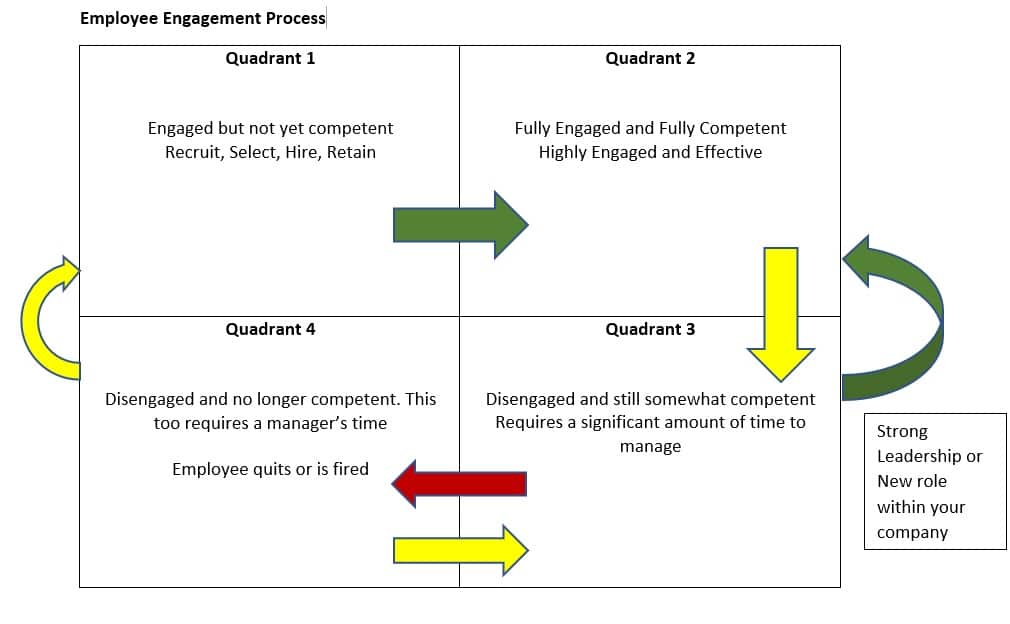Ever made a wrong hire in your business? Whether you are a large or small organization, have low or high turnover, you probably think you understand the cost of hiring someone new into your company. There’s the cost of advertising, interviewing, drug testing, onboarding, training, etc. But what are the hidden costs of hiring the wrong person? What if you find out months or even years down the road you hired the wrong person from the beginning?
The True Cost Of Making The Wrong Hire
Research from Gallup shows 67% of your employees are not engaged at work. What does that mean in practical terms?
Organizations with low engagement experience higher turnover.
Companies with low engagement scores earn an operating income of 32% lower than companies with more engaged employees.
In contrast, companies with high engagement:
Have earnings-per-share levels 2.6 times higher than companies with low engagement
Organizations with highly engaged employees experience a 7x-greater 5-year total annual shareholder return than organizations with less-engaged employees.
Think back to when you started your job, you were likely excited and eager to learn. So how do your employees become disengaged? The chart below illustrates a typical process for having engaged or unengaged employees:
 In Quadrant 1 employees are hired and brought into the organization. Regardless of the job, most employees are highly engaged and chomping at the bit to get started. They are not particularly competent at this stage but are learning and their competency and value to the organization grow each day. Employees stay in Quadrant 1 for 3-12 months depending on the complexity of the job.
In Quadrant 1 employees are hired and brought into the organization. Regardless of the job, most employees are highly engaged and chomping at the bit to get started. They are not particularly competent at this stage but are learning and their competency and value to the organization grow each day. Employees stay in Quadrant 1 for 3-12 months depending on the complexity of the job.
In Quadrant 2 employees are highly engaged and have learned enough to be fully competent and of high value to the organization. If the job is a good fit for the motivational needs of the employee, they may stay in Quadrant 2 for quite a while and this is obviously where we want all our employees to be and stay if possible. Unfortunately, we know most employees are not fully engaged so many moves to Quadrant 3.
In Quadrant 3 employees become disengaged and over time begin to lose their competence. If they stay in Quadrant 3 long enough, they may move to Quadrant 4. It is possible for the employee to become re-engaged either through strong leadership or through a new project or role opportunities within the company, moving back to Quadrant 2.
If employees move to Quadrant 4, they can become so disengaged they lose competency. If an employee stays in Quadrant 4 for very long, they will either leave on their own or be fired at which point the employer starts the cycle over, hiring a new employee.
What causes loss of employee engagement? Is it:
- Lack of effective leadership
- No shared vision
- Weak or toxic organizational culture
- Poor communication
- The job does not meet the motivational needs of the employee
- All of the above
The answer varies from one organization to the next but most often the answer is some level of “All of the above.”
Turn-over is just the cost of doing business, right? But what is the cost, really? Earlier we shared how engagement impacts performance metrics over time. Based on the employee engagement process model let’s explore the real $ cost of low engagement.
| Sample Cost To ABC Widget Company | |
| Total number of employees | 100 |
| X Percentage in Quadrant 3 (per Gallup research) | 67% |
| Estimated number of employees in Quadrant 3 | 67 |
| X Average Monthly Compensation per employee in Quadrant 3 | $4,000.00 |
| Estimated Average monthly compensation for Employees in Quadrant 3 | $268,000.00 |
| X Cost of lost effectiveness (100-67%) | 33% |
| Estimated Monthly Cost of employees in Quadrant 3 | $88,440.00 |
| Estimated Annual cost of lost productivity of employees in Quadrant 3 | $1,061,280.00 |
This is just a model and you may say that number is wrong and unfortunately you would be right. This example only considers the hard cost of each disengaged employee in Quadrant 3. That’s bad enough but these disengaged individuals don’t just sit there quietly. They play a game called “ain’t it awful”, recruiting others to their side. They do this in the break room, over a beer after work or even at company events. You know it’s true because you’ve seen it and maybe at some point in your career played the game yourself.
How To Avoid The Costs
It doesn’t have to be this way. Even under the best circumstances you will have disengaged employees, but you can dramatically reduce their numbers and improve your bottom-line in doing so. Here are a few things you should consider:
- Use assessments in your hiring process. Scientifically valid assessments like those Jamesson Solutions offers are the only way to get an objective view of how the person will show up to work behaviorally and if the job fits the motivational needs of the person. You are not doing yourself or the applicant any favors putting them in a job that does not fit them.
- Have a clear mission and vision for your company and make sure everyone in the organization knows them, what they mean and what their role is in making the mission and vision happen
- Assess your current organizational culture and whether that culture is conducive to enacting your company’s mission and vision. If not, actively work to make the needed changes to your culture.
- Most are not born leaders but rather grow to become leaders over time, through learning on the job, through mentorship and through dedicated, focused leadership development. It is as critical to your organization for you have a solid leadership pipeline as it is to have a solid sales pipeline. So, make sure you are developing your people at every level.

